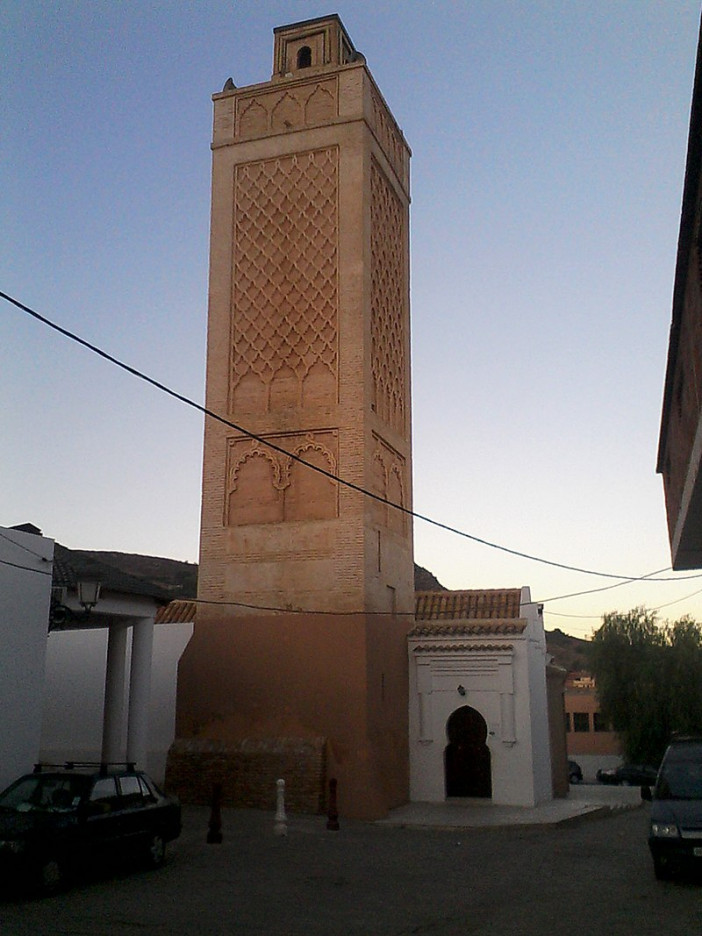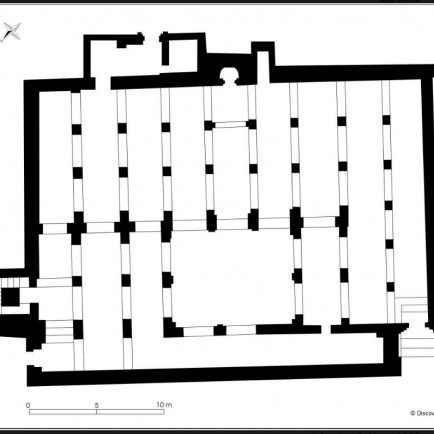Great Mosque of Nedroma
History
is a revered mosque in the Algerian city of Nedroma, which is around 77 kilometers from Tlemcen. The oldest surviving Almoravid minbar is located in the mosque, which was established in 1145.
Urban and Architectural
The mosque was built using the same construction method as other religious structures constructed during the Almoravid dynasty. The design features a nave parallel to the wall facing the qibla and a rectangular sahn in the center that is flanked by walls. Nine naves are evenly spaced out to the south of the center nave in the prayer hall. A gallery is formed by the connection of three naves to the short side of the sahn. The gallery completely encloses the longest side of the sahn, which is parallel to the qibla wall.
From the top, the structure has a rectangular shape and is covered with a roof made of parallel tile slopes.
The cross vault above the mihrab is where the central roof, which is a little wider, ends. The pillars that separate the naves support the horseshoe-shaped arch. There are no ornamentation on the mihrab. The scripture that is available inside the prayer hall states that the minaret was later added in 1348 and that it was not initially present.
On the minbar made especially for the mosque and on the portion of marble used for the minaret, the construction date is recorded.
Description
References
https://islamicart.museumwnf.org/database_item.php?id=monument;ISL;dz;Mon01;28;ar
Details
Location
Nedroma, Algeria
Year of Build
1145
Drawings
Map
History
is a revered mosque in the Algerian city of Nedroma, which is around 77 kilometers from Tlemcen. The oldest surviving Almoravid minbar is located in the mosque, which was established in 1145.
Urban and Architectural
The mosque was built using the same construction method as other religious structures constructed during the Almoravid dynasty. The design features a nave parallel to the wall facing the qibla and a rectangular sahn in the center that is flanked by walls. Nine naves are evenly spaced out to the south of the center nave in the prayer hall. A gallery is formed by the connection of three naves to the short side of the sahn. The gallery completely encloses the longest side of the sahn, which is parallel to the qibla wall.
From the top, the structure has a rectangular shape and is covered with a roof made of parallel tile slopes.
The cross vault above the mihrab is where the central roof, which is a little wider, ends. The pillars that separate the naves support the horseshoe-shaped arch. There are no ornamentation on the mihrab. The scripture that is available inside the prayer hall states that the minaret was later added in 1348 and that it was not initially present.
On the minbar made especially for the mosque and on the portion of marble used for the minaret, the construction date is recorded.
Description




